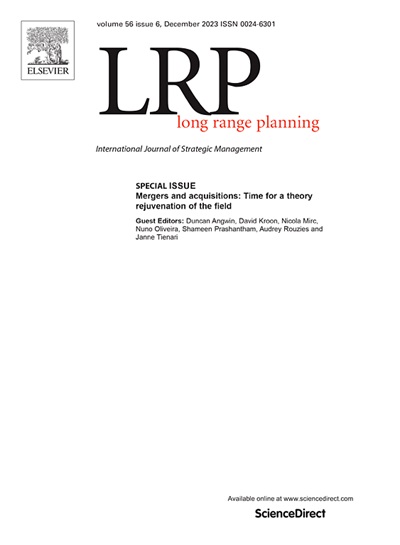When strategy is a dirty word: The role of visuals in sensegiving strategy to a skeptical audience
Abstract
When setting a new strategy for their firm, managers engage in a range of sensegiving activities designed to introduce the new direction and explain the reasons for the change. These communication events commonly involve the use of strategic management terms and concepts to explain and justify the prescribed strategy. Literature thus far assumes that audiences understand and agree that these terms and underlying concepts are appropriate and relevant. Yet such views fail to explain strategy sensegiving in contexts where audiences of strategy presentations are ignorant or skeptical towards strategy concepts and ideas. We examine sensegiving under such conditions by analyzing a manager introducing a new strategy in a creative agency which expressed skepticism towards the concepts and practice of strategizing. Using data from video recordings of a sequence of internal strategy presentations, we identify three strategies designed to overcome prejudice towards strategic thinking while at the same time encouraging its use: winning the right to lead, finding resonance, and enrolling the audience into the strategy. We further find how these three sensegiving strategies are supported by carefully crafted visuals to either emphasize or de-emphasize aspects of the strategy and its supporting rationale. Our findings extend the literature on the practice of strategy by illustrating how the visual supports sensegiving efforts to guide a firm's interpretation of a proposed new strategic direction.

 求助内容:
求助内容: 应助结果提醒方式:
应助结果提醒方式:


